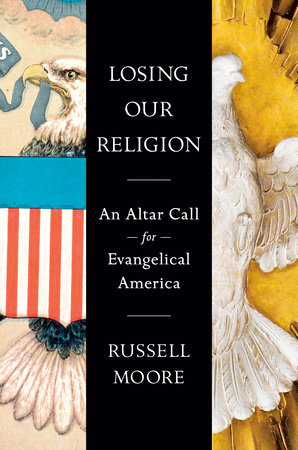This Moore to the Point commentary is the continuation of part one of “Where the Wild Things Are.”
Christian children’s Sunday school storybooks tend to have pictures of an almost bored Adam and Eve (with strategically placed tree limbs obscuring anything inappropriate for little eyes) gazing at such non-threatening beasts as giraffes and parrots. The tranquility of this scene obscures some of the punch of the Genesis account, and furthers a sanitized view of animals held by modern readers of Genesis, at least in the Western industrialized world. We may have “phobias” of certain animals (snakes, mice, etc.), but most of us have never known the paralyzing fear of being prey before a predator.
The contemporary Darwinian creation myth tells us that we are essentially the same as the animals, only further along down the evolutionary food chain. The Genesis account shows us from the beginning what we already know intuitively, there is a deep and ancient divide betwen humans and the animals. It also tells us something else we know intuitively, our destiny is intertwined somehow with these creatures over which we were once given dominion and stewardship. The first readers of Genesis would have understood the awe and mystery of the sixth day, that Yahweh has sovereignty over the animals they feared.
After all, when the Creator revealed his awesome power to Job, he did not speak to him in terms of abstract philosophy, of omniscience, omnipotence, aseity, simplicity, an so forth. God instead thundered that he was the keeper of the most fearsome animals imaginable, creatures before whom Job and his ancient near eastern contemporaries would have seen themselves as, quite literally, “meat.” The predatory animal imagery also applies in Scripture to God’s providential nurture of his cosmos. Yes, Jesus teaches us that God notes the falling of a single sparrow from the sky. But the Psalmist likewise declares that God drapes the earth with night darkness so that the young lions may seek their prey from their Creator (Ps 104:30-21).
In his book Monster of God: The Man-Eating Predator in the Jungles of History and the Mind(W.W. Norton, 2003), David Quammen raises the flaw in much of contemporary Christian thinking about creation and the natural order. Perhaps because of our growing distance from animal danger, we have an increasingly anemic theology of predation. Our bookshelves buckle beneath volumes seeking to reconcile the goodness of God with the moral evil of the Holocaust or the serial killer. At the same time, we wrestle with “natural evil” whenever we see children buried beneath a Turkish mudslide or an elderly Mississippian weeping before the remains of a home swept away by a hurricane. But too often there is an uncanny silence when we watch the image of a lioness tearing apart the bloody muscle of an antelope on the Discovery Channel.
This has not always been so. C.S. Lewis, for instance, agonized over how to reconcile animal violence with a good Creator in his classic book, The Problem of Pain. Lewis’s conclusion was that predation is not in any sense “natural.” It can only be rooted in the ancient satanic rebellion. In the current era, Matthew Scully in his excellent work, Dominion: The Power of Man, the Suffering of Animals, and the Call to Mercy (St. Martin’s, 2003), has pointed to ancient Christian thought on the evil of predation in order to rebut the poor stewardship of animals by humans who point to the violent natural order as the “natural state” of animal life, a state that can morally be replicated in inhumane factory farms or research laboratories.
If Christians are ever to provide a “counter-story” to the Darwinist creation myth, we must account for a nature that certainly does seem red in tooth and claw, not only in terms of the obvious predators, but also in terms of the (often even more dangerous) microbial parasites. Christians are effectively countering Darwinism with the obvious truth that the natural order seems to be intelligently and personally designed. I understand this strategy, and am fully supportive of it. After all, there is a need for a broad coaliton of dissenters against Darwinism among those who don’t necessarily agree on the details of cosmic or human origins, and even among those who don’t necessarily agree on the identity of the Designer.
And yet Darwinists are already marshalling the theodicy argument that the parasite sapping nutrients from a starving child in sub-Saharan Africa seems awfully well designed too. We do not want to ignore the issue and suffer the fate of William Paley and the early natural theologians, who celebrated the romantic notion of the “harmony of nature” as pointing to the goodness of God. Yes, it is easy to say that a formation of geese in the skyline declares the order of the Creator. But what does the bulge of a pig in the mid-section of a python tell us about the Designer? Skeptical philosophers such as atheist William Rowe often point to such “natural” evils as the agonizing death of a fawn to disprove the possibility of a benevolent and sovereign Deity.
It is appropriate and necessary for Christians to apply the “wedge” of general revelation to the origins debate, in order to reason with a culture enraptured by Darwinism. We must ask, as such capable scientists and philosophers such as William Dembski and Michael Behe are doing so well, whether natural selection can account for this cosmos, even on its own terms. But only with special revelation can we answer David Quammen’s question: why does the life of animals, when seen up close and personal, turn our stomachs and accelerate our heartbeats?
Quammen is right to conclude that predators remind us that we’re not always at the top of the food chain. But the Scripture tells us that this is not the way it is supposed to be. As a matter of fact, the Bible seems to indicate that the very fact that there is a food chain can be traced back to something which went awry in Eden.
In light of this, it would seem that humans would want to pretend to be the unthreatened top of the food-chain. This is especially true when most of us will never be challenged by the tooth or paw of a predator. Why are we, especially seen in our popular culture, so fascinated with dangerous creatures?
This Moore to the Point commentary will continue with part three of “Where the Wild Things Are.”






